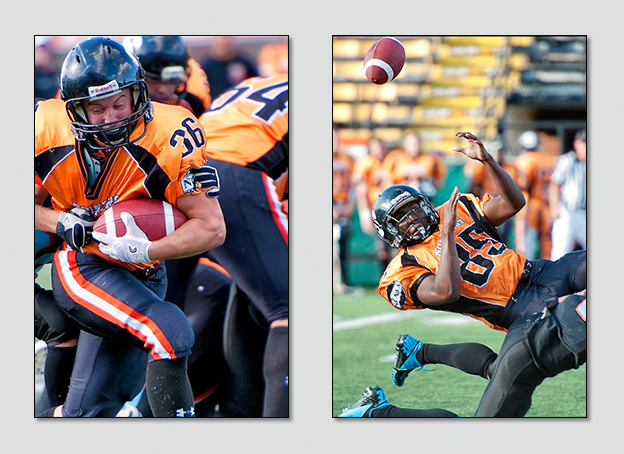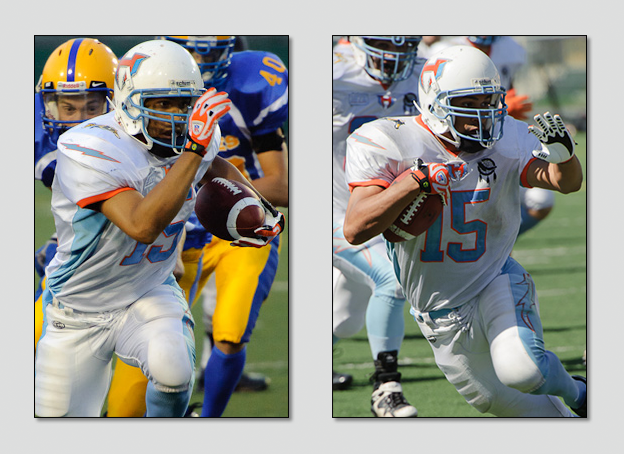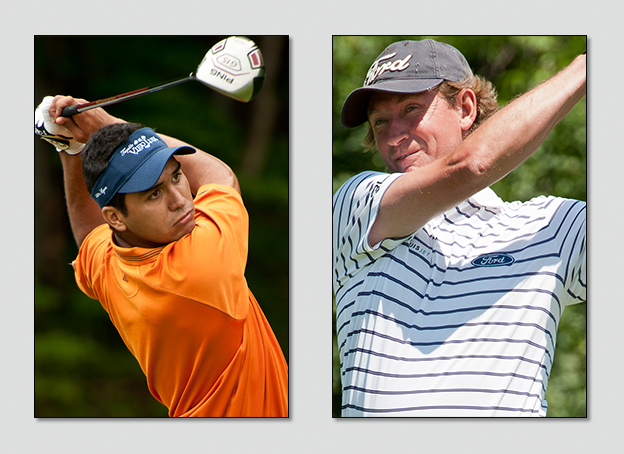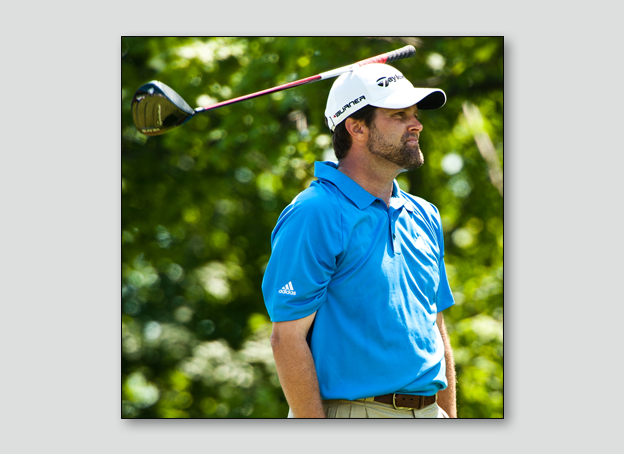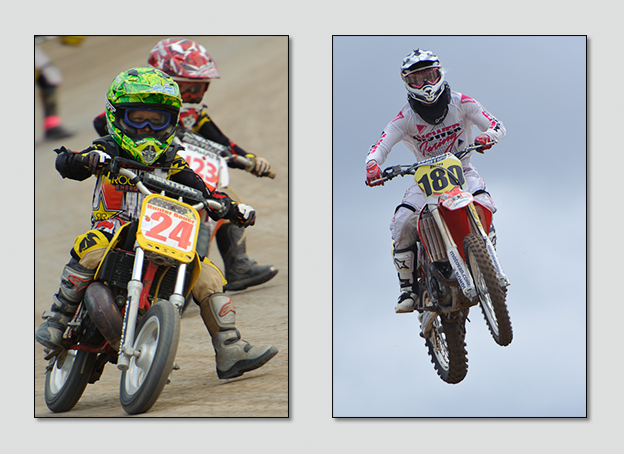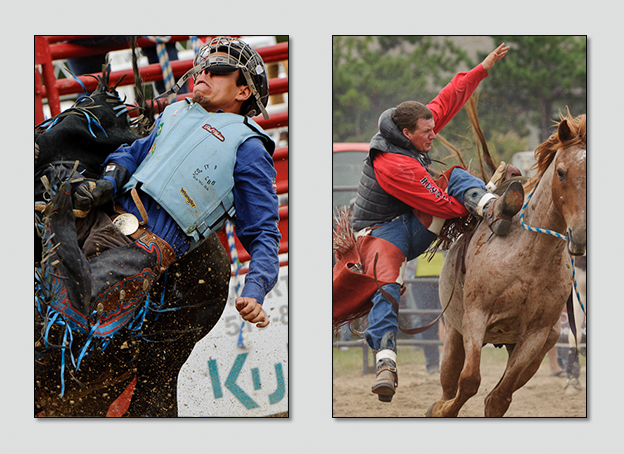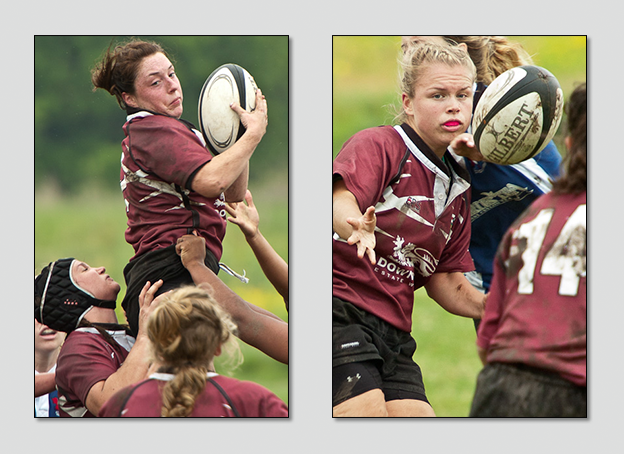If you think shooting indoors was challenging – read Shooting Sports Part 1 in PHOTONews Spring 2015 – wait until you go outside where you have absolutely no control over your shooting conditions at all.
If you are lucky, the temperature will be warm, the sun will be shining and there might even be a slight breeze, but we are not always presented with ideal weather conditions. In that case, we must be prepared for the worst possible conditions in order for our gear to survive, never mind us.
Before I discuss how to best shoot during various weather conditions and what would possibly be some of the better vantage points, let’s discuss camera settings.
I always shoot in Manual Mode. I set my shutter speed based on the activity and the age of the participants. This would be between 1/250 and 1/1000 of a second. Younger kids at 1/250 and the older ones at 1/1000.
Depending on your camera make and model, you may be able to use an ISO of 800 or even 1250 without much noise in your images. Generally, you will want to use the lowest ISO you can at your chosen shutter speed and aperture. You can even choose to set your camera to Auto ISO and limit the highest value to what value you are comfortable with based on past experience you have had.
As far as f-stop / aperture is concerned, f/8 should be sufficient but lower would be preferred. You do not necessarily need to go to f /2.8 unless you are after a special effect or you are trying to isolate your subject from the rest of the participants or from the crowd. To understand what I mean by isolating your subject from the crowd, think of that shot of the football quarterback as he is getting ready to make the pass; he is in sharp focus, but the crowd in the stands are out of focus. That kind of image would have been shot with a very long telephoto lens with the aperture set to it’s maximum widest opening. Another factor that determines how isolated your subject is from it’s background, is the distance between you and that subject. The closer you are, the greater the isolation.
Shooting with a 300mm f/2.8 lens on the sidelines of a football game, will give you more subject to background separation than using that same lens shooting from the stands.
Not all sports images are shot with long telephoto lenses and fast apertures. Some amazing images can be captured with a standard 50mm lens and even wider, from the sidelines. When I mention sidelines, I don’t just mean the sidelines of a football, soccer or rugby field but the “sidelines’ could also mean being right up along the edge of a dirt bike trail up a mountain side or close the edge of a skate boarding bowl.
Remember the somewhat “Golden Rule” when it comes to minimum shutter speeds and lenses when shooting hand held. Your shutter speed should be no slower than 1 over the focal length. So if you are shooting handheld using a 70-200mm lens at 200mm, your shutter speed should be 1/200 of a second in order for your subject to be in sharp focus. If you have VR (Nikon) lenses or IS (Canon) lenses (and whatever the other lens manufacturers have decided to call it), you should turn this feature off as it will not do any good at these fast shutter speeds. It may even slow down your system’s responsiveness to focus tracking.
On my Nikons, I use the AF-ON Button to focus as opposed to using the shutter release button to focus. Having the focus and the shutter trigger using the same button just slows down the camera’s ability to focus as fast as it possibly can. This takes a little getting used to, but in no time you’ll wonder why this isn’t how all cameras are set up.
A lot of people today have a 70-200 f/2.8 lens and it is a great lens to shoot sporting events. Add a 2x tele-converter to this and you will be able to bring the action closer even closer. You will give up 2 f-stops in the process, but if you are shooting outside during daylight hours, this should not be a problem. So your f/2.8 lens will effectively be an f/5.6 lens. You now have a 400mm f5.6 lens. Combine that with a DX format (cropped sensor) and you will really be on top of things.
So you are all set to go shoot some sporting events. You have checked all of your camera gear and you have all the lenses you think you will want to use (for some that may only be one lens), but what is the weather going to be?
If there is the possibility of rain, you may want to not only bring your raincoat but also rain protection for your camera and lens. If your camera bag does not have a rain cover, bring along some garbage bags to protect your gear that is inside the camera bag. Don’t forget, most camera bags are water resistant – not water proof. Neither is your cell phone! Put that in a ziplock bag and always pack extra clothing and shoes in the trunk of your car just in case you get soaked while shooting. This way you’ll have some dry clothes to change into for the drive home.
If it’s going to be sunny all day, then maybe a hat (big and floppy to cover your ears) and sunscreen may be in order. What about using one of those beach chairs with the umbrella attached. I have an umbrella attached to my monopod so that rain or shine I am protected.
Are you going to be standing all day in one spot or moving around from one location to another? Canadian Tire sells these great little portable, collapsible camping seats that I take with me everywhere I shoot. You never know when you are going to want to just sit down for a while. Maybe there is a break in the action and you don’t want to leave your great shooting spot.
Shoot low. This gives your viewers a better appreciation of what is actually happening on the field. If you can’t kneel for extended periods of time then a camping chair is perfect. If you plan to stand while shooting, use a monopod with the video foot so you can pivot your camera to suit the action. Sometimes I’ll sit in my camping chair and use my monopod right on the sidelines – it’s a little dangerous but without risk, there is little reward, right?
Whether you are standing on the sidelines or shooting from ground level, remember to pay attention to what is actually going on in the game you are photographing because these athletes are not stopping for you. They can’t. They’re going (or coming) too fast so make sure your insurance is paid up and jump out of your way.
About the Author:
John Warren is an award winning Photoshop Instructor and Professional Photographer living and working in the Greater Toronto Area and is on the faculty at Humber College.



